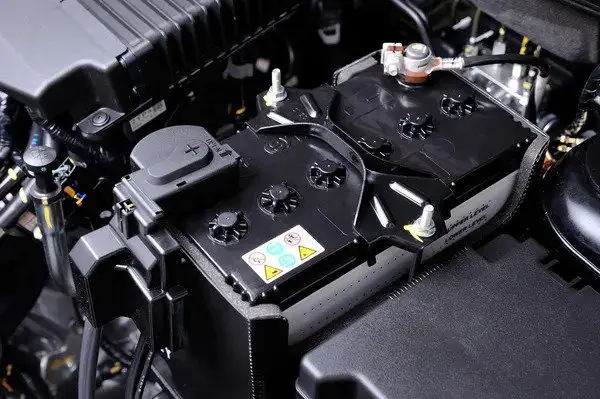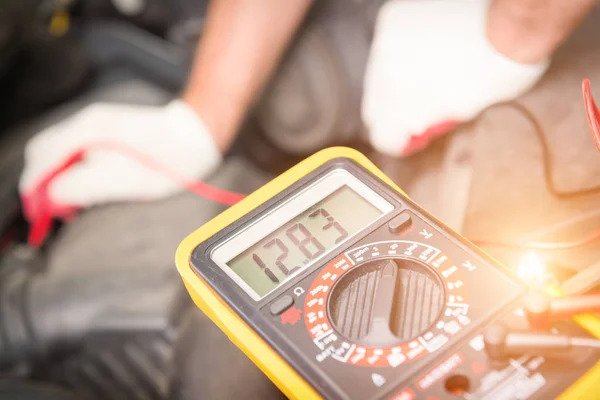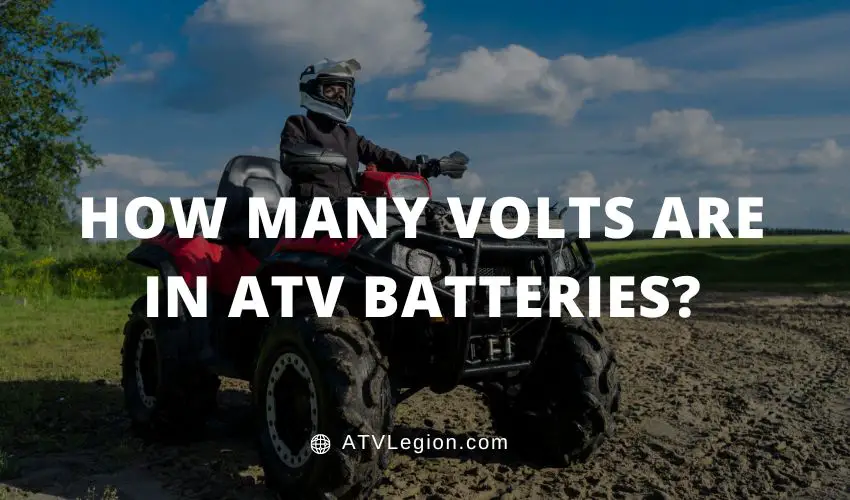The battery is one of the most important elements for your ATV or any vehicle. Despite their significance, batteries need to be replaced regularly because they tend to lose their charging capacity over a few years. The voltage, on the other hand, is the amount of electrical potential your battery holds.
So, how many volts does an ATV battery have? The most common label size of an ATV battery is 12v. However, there are other sizes that come occasionally, such as 6v and 24v. A 12v battery’s actual voltage range is from 12.6 to 12.8 volts, and it can also reach an extent of 13.1 volts.
The complexity of an ATV battery does not just lie in its voltage. The model and make of your ATV is also a factor to be taken into consideration.
In this article, we will further explain everything you need to know about ATV battery voltage.
Contents
Types of ATV Batteries

Similar to other battery types, ATV batteries come in a wide variety. The major types of ATV batteries are conventional (flooded) batteries and absorbed glass mat (AGM) batteries.
Conventional (Flooded) Battery
The most common type of battery used in ATVs is the conventional (flooded) battery. The plates are inundated with distilled water; thus, the name “flooded.”
Because the caps are detachable, you can monitor the water levels on a regular basis and replace them as needed to maintain your battery working at maximum capacity.
For your ATV, this will guarantee durability and effectiveness.
Compared to absorbed glass mat batteries, flooded batteries will be much more economical, but they will also be more prone to problems.
The jolts, curves, bumps, and other characteristics of ATV riding make conventional batteries vulnerable to leakage. They require far more frequent maintenance and are less long-lasting than the AGM battery.
Absorbed Glass Mat (AGM) Battery
Another name for Absorbed Glass Mat (AGM) batteries is “maintenance-free” batteries. AGM batteries, as opposed to conventional batteries, have closed caps.
They feature fiberglass pads wrapped around the cells, as opposed to the water frequently present inside the flooded batteries. It is the responsibility of the pads to remove the acid that builds up on the battery.
The majority of ATV fans choose AGM batteries as their preferred choice. Despite being slightly pricier than conventional batteries, they have several advantages. Most users discover that these advantages pay out over the long run, both monetarily and in terms of how satisfying it is to utilize them on their ATVs.
The primary advantage mentioned by the majority of ATV riders is the lack of maintenance needed for this type of ATV battery. You will never have to worry about water levels or leaks while using this battery, especially when off-roading.
Furthermore, they are constructed in a more robust, shock-absorbing manner, allowing them to stay together longer when riding on trails and climbing.
Using an AGM battery is the best option for knowledgeable and daring ATV riders. Of course, you must confirm that your ATV can utilize this sort of battery, but you should be OK as long as it can. You will almost certainly discover that the original purchase price gives a better cost-benefit analysis for assuring a highly pleased buy.
Power sports batteries are examples of AGM batteries.
How To Check the Voltage on Your ATV Battery

If you find checking the voltage in your ATV battery challenging, don’t worry; it is a lot easier than you think. The only tool you require is a voltmeter, and it doesn’t take much time to perform this task.
The first step to take is to find your ATV battery. It ought to be located under the seat or in the storage compartment.
When you have identified your ATV battery, the next step is to connect the red lead from the voltmeter to the positive terminal on the battery and also connect the black lead to the negative terminal.
Your battery’s voltage is said to be in good order if the reading is 12 volts or higher.
However, if the reading is lower than 12 volts, your battery is no longer at full capacity. It means it has lost its charge and needs to be recharged as soon as possible.
How To Find an ATV Battery Charger That Will Work for Your ATV
Getting the correct battery charger for our ATV needs can be difficult because several varieties of ATV battery chargers are available on the market.
The first step is to locate a compatible charger with your ATV. There are several approaches to this. You might begin by looking through the charger’s compatibility list. This is normally found on the charger’s back or bottom. If your ATV is not listed, the charger is incompatible with it.
The second method is to look on the manufacturer’s website for a suitable charger. The majority of manufacturers’ websites will contain a list of compatible chargers. You may always contact the charger’s manufacturer’s customer care division if you’re still having trouble finding a suitable charger.
After you’ve acquired a suitable charger, read the manual that came with it. You should ensure that you are utilizing the charger properly, as this is crucial. You risk damaging the battery in your ATV when not used properly.
The final thing you need to do is charge your ATV’s battery once you’ve discovered a compatible charger and ensure it is fully charged before riding your ATV.
Most Common ATV Batteries
As previously said, an ATV battery’s most common label size is 12v. In light of this, I’ve compiled a list of some of the top batteries for your four-wheeler. This list can perhaps assist you in making the greatest and most suitable buy for your vehicle.
If you want additional details and resources on where to get the best battery for your ATV, you can always chat with an expert or a staff member at a nearby ATV sales shop.
Here are the most common ATV batteries.
Yuasa YUAM620BH

Yuasa is a well-known maker of ATV batteries. Their high-quality and long-lasting goods make them an excellent choice for your new ATV battery. One of its best characteristics is the safe fill option for emptying the acid. This is an absorbed glass mat battery, as opposed to a typical ATV battery.
Aside from the safety measures, several customers have reported that this sort of battery has lasted them 10 years or more. That is clearly on the lengthy side for any vehicle, but especially for an ATV battery. The first investment is also quite low, at roughly $100, depending on the point of sale.
ThrottleX MX30L

The ThrottleX MX30L is the most costly model on the list for a reason. These are high-quality batteries that, while advertised primarily for motorcycles, also fit and perform well in ATVs. It has significantly more power than the default battery.
This battery is ideal for anyone who is serious ab riding.
Odyssey PC545

The Odyssey PC545 is a lower-end model than the ThrottleX. This is the battery for you if you want a robust improvement that still gets your ATV cranking harder than any big box shop battery.
It has specifications to rival the best, and while more expensive, it is worth the money to have a battery that will endure and keep your ATV running at peak performance. This is another absorbed glass mat (AGM) variant with spill-proof technology that provides a safe and simple battery experience.
Weize YTX20L-BS

Look no further than this alternative if you want a more economical option for your ATV that still beats many typical shop brands. The Weize YTX20L-BS is a reliable ATV battery that will replace your current one.
While it is not the most powerful ATV battery on this list, it is a fantastic option for getting a reliable battery at a reasonable price. The only disadvantage of this choice is that the wiring is a little more difficult to install, but that might be related to the vehicle you are attaching it to rather than the battery itself.
Conclusion
TMostATV batteries are powered by a 12-volt design system (at rest). This is the typical voltage system that most vehicles in the United States employ.
Although there have been rising questions concerning the possibility of swapping ATV batteries. For instance, is it possible to swap a 6v battery for a 12v battery and vice versa?
It is not suggested to use a 12v battery in a vehicle designed for 6v. It would imply that you are purposely applying too much power on the four-wheeler, which might be dangerous. If you try to use a 6v battery in a 12v vehicle, it will not work; you must connect two 6v batteries in series to a 12v vehicle.

